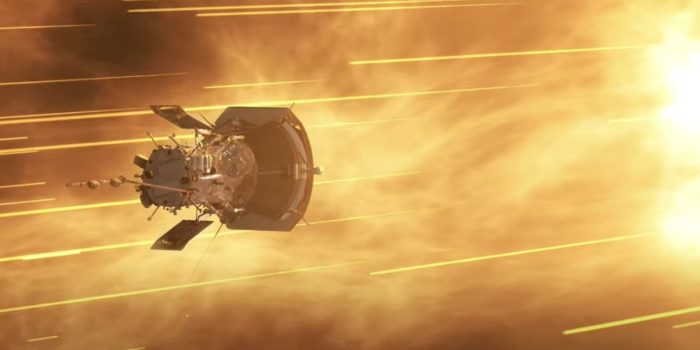The Parker Solar Probe, operated by NASA, has reached a significant milestone by journeying into the core of a colossal coronal mass ejection (CME), thus becoming the inaugural spacecraft to approach the Sun so closely. This achievement marks a groundbreaking feat in space exploration.
Recently published in the Astrophysical Journal, a study delves into the probe’s encounter and unveils astonishing revelations. Among these discoveries are captivating images that depict the chaotic interior of the CME in visible light, offering unprecedented insights into the dynamics of solar phenomena.

These images, compiled into a video, showcase turbulent swirls passing near the probe, believed to be manifestations of Kelvin-Helmholtz instabilities (KHI), a phenomenon rarely observed. KHI arises from the interaction between two fluid streams moving at different speeds, which in the case of a CME, occurs at the interface of hot plasma and the solar wind emitted from the Sun’s corona.
The study’s lead, Angelos Vourlidas, expressed astonishment at the development of KHI structures in visible light CME images, highlighting the unexpected nature of this observation. Understanding KHI and its role in regulating CME dynamics is pivotal in comprehending their evolution and behavior within the solar wind, as emphasized by co-author Evangelous Paouris.

CMEs remain enigmatic, with their spontaneous occurrences and unpredictable nature posing challenges for scientists. While typically associated with sunspots and solar flares, some eruptions originate from regions devoid of such activity, adding to their mystery. Moreover, the immense material and powerful magnetic fields ejected during CMEs can disrupt terrestrial infrastructure, leading to widespread power outages and communication disruptions.
The researchers assert that the newfound insights could aid in predicting CME events in the future, potentially mitigating their impact on Earth. Paouris hailed the direct imaging of phenomena like KHI as a significant discovery, offering a fresh perspective to enhance our understanding of CME propagation and their interactions with the solar wind.
In summary, the Parker Solar Probe’s historic encounter with a CME has unveiled remarkable insights into the dynamics of these solar phenomena, shedding light on their intricate behaviors and paving the way for improved forecasting capabilities to safeguard against their disruptive effects on Earth.


